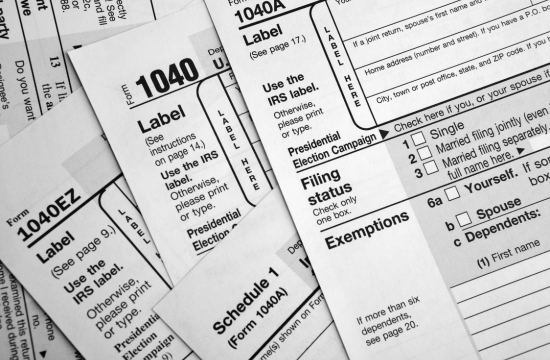Accurate W-2 forms are crucial for both employers and employees. These forms, officially known as the Wage and Tax Statement, provide detailed information about an employee’s earnings and tax withholdings for the year. Ensuring the accuracy of W-2 forms is not just a matter of compliance; it has significant implications for financial planning, tax filing, and avoiding penalties. In this blog, we’ll delve into the importance of accurate W-2 forms for both employers and employees and the steps each party can take to ensure precision.
Why Accurate W-2 Forms Matter for Employers
Compliance with IRS Regulations
For employers, issuing accurate W-2 forms is a legal requirement. The IRS mandates that employers report employee earnings and tax withholdings accurately and timely. Failure to do so can result in significant penalties. Inaccurate W-2 forms can trigger audits, leading to additional scrutiny and potential fines. Thus, the accuracy of these forms is paramount to maintaining compliance with IRS regulations.
Avoiding Penalties
Employers can face penalties for incorrect or late W-2 forms. The penalties vary depending on the extent of the delay and the size of the business. For instance, if an employer fails to provide correct W-2 forms within 30 days of the deadline, the penalty can range from $50 to $270 per form, with a maximum annual penalty of $3,339,000 for large businesses. Accurate W-2 forms help avoid these costly penalties and the associated administrative burden.
Employee Trust and Satisfaction
Employees rely on their employers to provide accurate W-2 forms for their tax filings. Mistakes on these forms can lead to delays in tax refunds, incorrect tax filings, and additional stress during tax season. By ensuring W-2 forms are accurate, employers demonstrate their commitment to their employees’ well-being and financial security, fostering trust and satisfaction within the workforce.
Streamlined Payroll and Accounting Processes
Accurate W-2 forms reflect an efficient payroll system. Employers who maintain accurate records and produce precise W-2 forms are likely to have streamlined payroll and accounting processes. This efficiency not only reduces the risk of errors but also saves time and resources, allowing the business to focus on other critical operations.
Why Accurate W-2 Forms Matter for Employees
Correct Tax Filings
For employees, the accuracy of their W-2 forms is essential for correct tax filings. The information on the W-2 form is used to complete the individual tax return, and any discrepancies can lead to incorrect tax calculations. An accurate W-2 ensures that employees report the correct income and tax withholdings, helping them avoid issues with the IRS.
Timely Tax Refunds
Employees look forward to their tax refunds, which can be delayed if their W-2 forms contain errors. Inaccurate W-2 forms can result in processing delays as the IRS seeks to verify the correct information. Ensuring the W-2 form is accurate helps employees receive their refunds promptly and avoid unnecessary complications.
Financial Planning and Budgeting
Accurate W-2 forms play a crucial role in employees’ financial planning and budgeting. The information on these forms helps employees understand their total earnings and tax withholdings for the year, aiding in effective financial management. With accurate W-2 data, employees can make informed decisions about savings, investments, and expenditures.
Avoiding IRS Audits
Errors on W-2 forms can increase the likelihood of an IRS audit. An audit is a time-consuming and stressful process that can be avoided with accurate tax filings. Employees who receive precise W-2 forms are less likely to face audits, providing peace of mind and ensuring that their tax affairs are in order.
Ensuring Accuracy in W-2 Forms
For Employers:
Maintain Detailed Records: Accurate W-2 forms start with detailed and accurate payroll records. Employers should ensure that all employee earnings, tax withholdings, and other relevant information are recorded correctly throughout the year.
Use Reliable Payroll Software: Utilizing reliable payroll software can significantly reduce the risk of errors. Modern payroll systems automate calculations and generate W-2 forms, minimizing human error and ensuring compliance with IRS requirements.
Conduct Regular Audits: Employers should periodically audit their payroll records to identify and correct any discrepancies. Regular audits help catch errors early and ensure that the information used to generate W-2 forms is accurate.
Provide Training: Training payroll staff on the importance of accuracy and the correct procedures for recording employee earnings and withholdings can help prevent mistakes. Well-trained staff are more likely to produce accurate W-2 forms.
For Employees:
Review Pay Stubs: Employees should regularly review their pay stubs to ensure that their earnings and tax withholdings are accurate. Any discrepancies should be reported to the employer immediately for correction.
Update Personal Information: Changes in personal information, such as address or marital status, should be promptly reported to the employer. Accurate personal information is essential for correct W-2 forms.
Keep Records: Employees should keep their own records of earnings and tax withholdings. Comparing these records with the W-2 form at year-end can help identify any errors.
Verify W-2 Forms: Upon receiving their W-2 forms, employees should carefully review the information for accuracy. Any discrepancies should be reported to the employer for correction before filing taxes.
The importance of accurate W-2 forms cannot be overstated for both employers and employees. For employers, accuracy ensures compliance with IRS regulations, avoids penalties, and maintains employee trust. For employees, accurate W-2 forms are essential for correct tax filings, timely refunds, and effective financial planning. Both parties should take proactive steps to ensure the accuracy of W-2 forms, thereby reducing stress and potential issues during tax season. Accurate W-2 forms are a fundamental aspect of financial responsibility and transparency, benefiting everyone involved.




